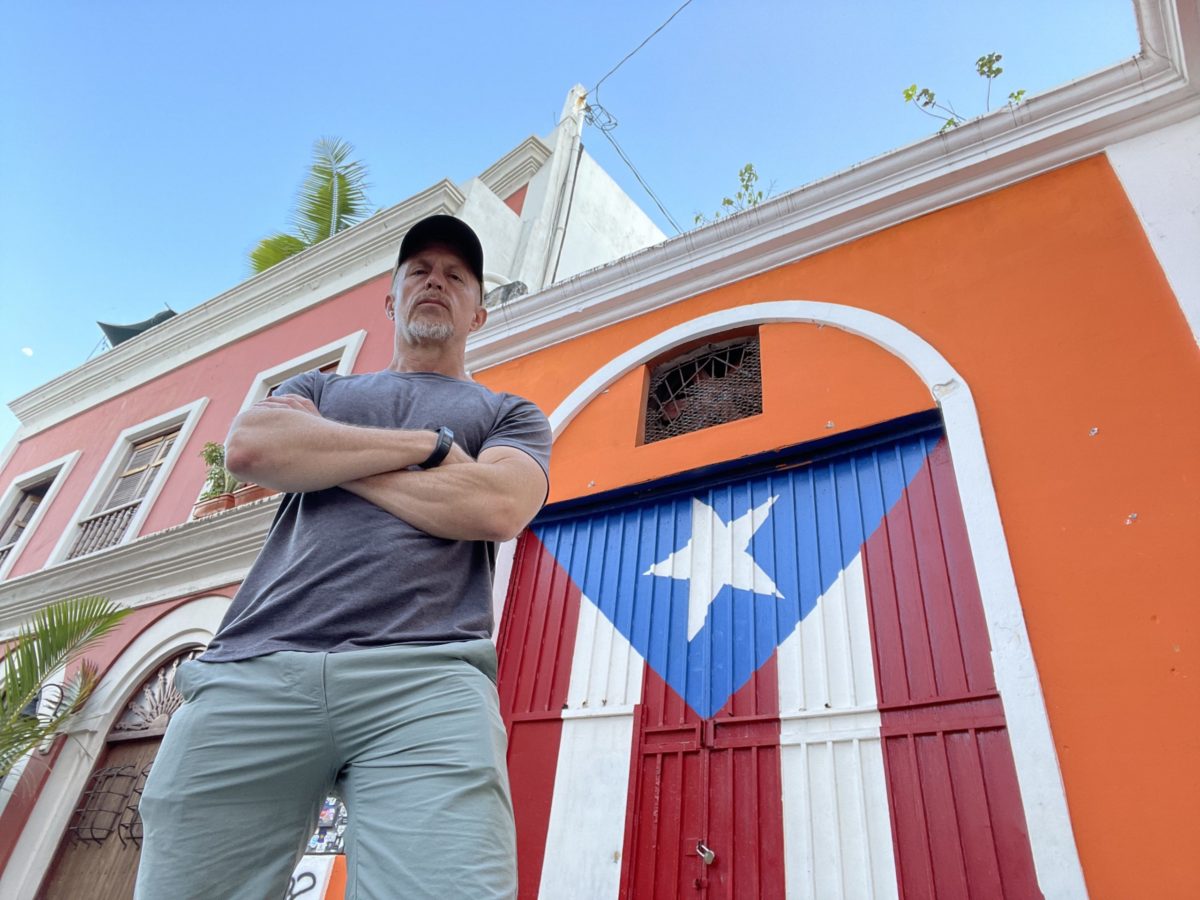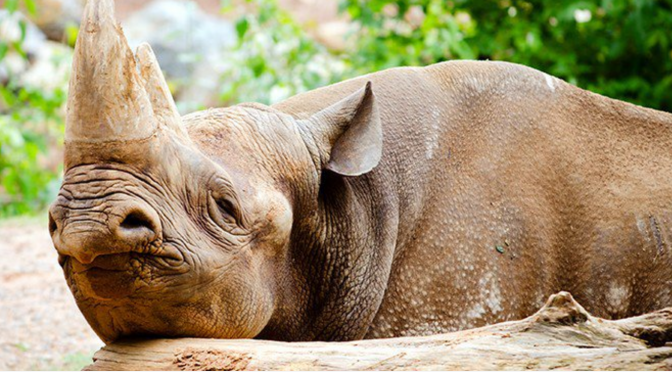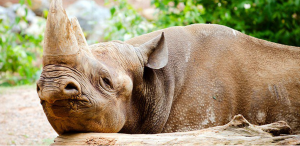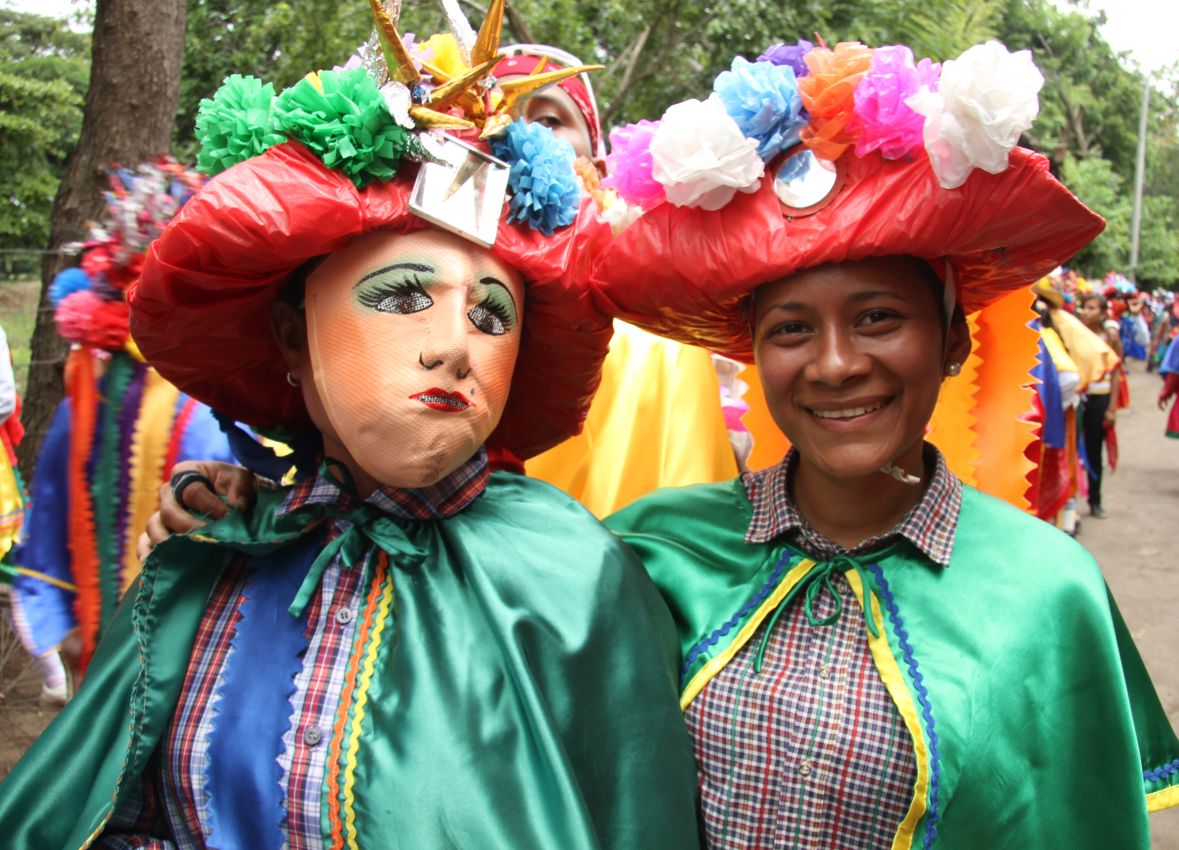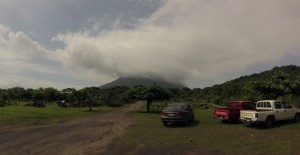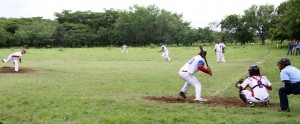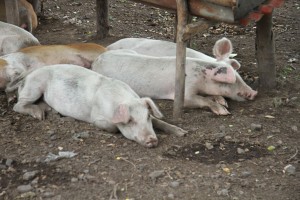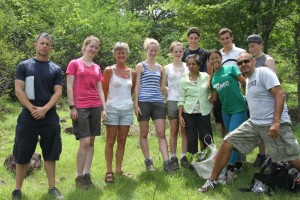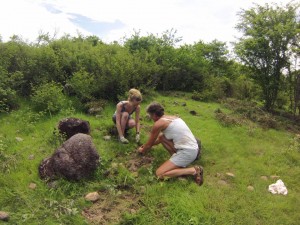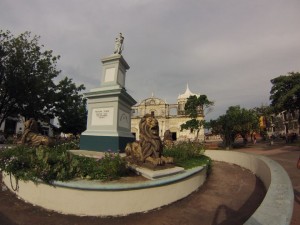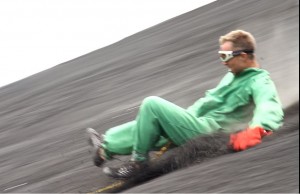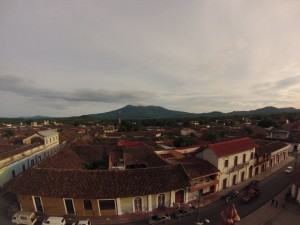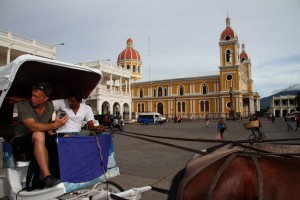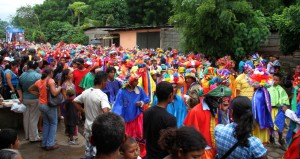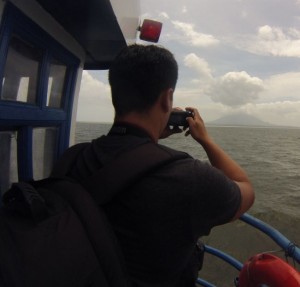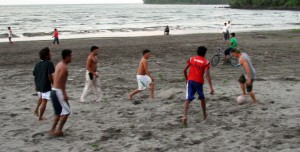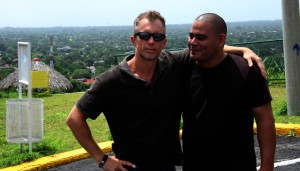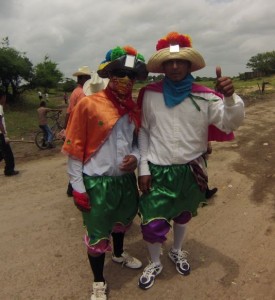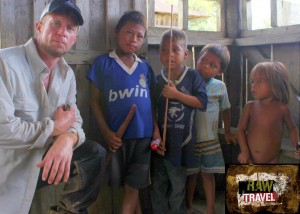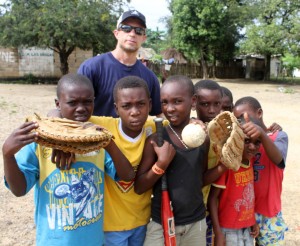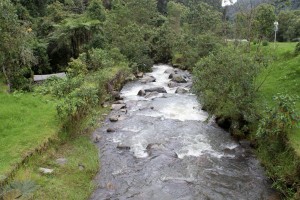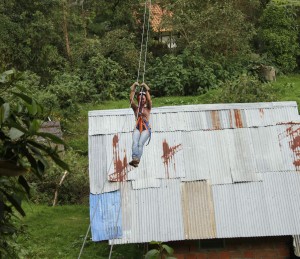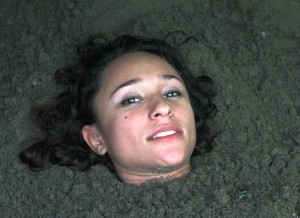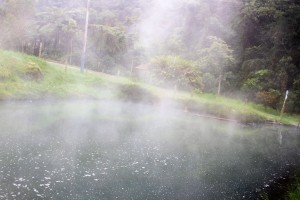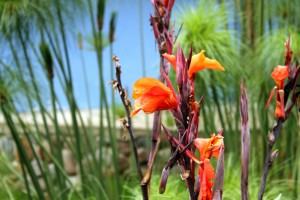I’ve visited Puerto Rico before. I always stated that technically correct fact. But truth be told, I remembered little about my first and only trip so many years ago. I remember it was a long weekend. I remember I stayed in the newer part of San Juan, ventured into Old San Juan for the day, and the next day rented a car to drive to Ponce where it proceeded to rain. That’s it. That’s about all I remember. What a disservice.
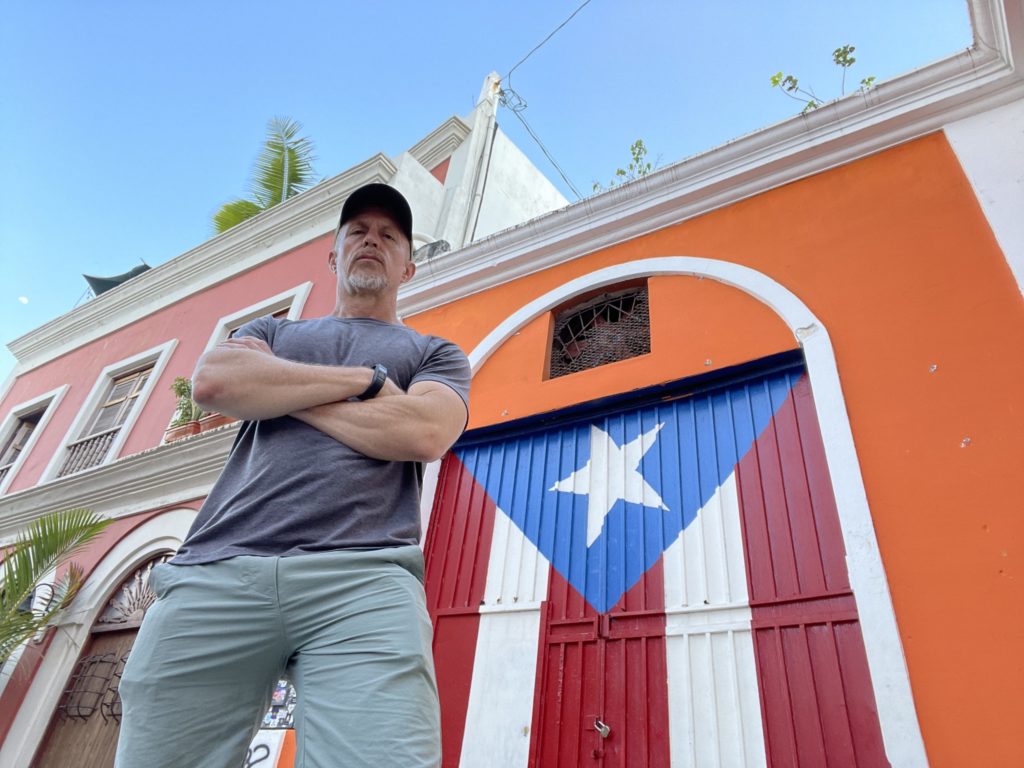
Ever since Hurricane Maria I’ve been itching to get back. Something about witnessing people recovering from a devastatingly miserable experience from afar moves me to get closer. Then there was an earthquake, then Covid. After a long absence from travel (20 months), now seemed the time. So I scheduled back-to-back trips “abroad.” First to Croatia, then to Puerto Rico. In both instances, I was hardly alone.
US travelers abounded in Croatia. That was surprising to me. US travelers abounded in Puerto Rico. That did not surprise me. Puerto Rico is, after all, for better or for worse, a US territory and there is no need to test for a Covid infection before returning to the mainland. I’m not sure if that’s what drew so many US travelers to Puerto Rico during their traditional off-season (the summer), if it was just pent-up demand for travel or the fact that no passport is needed. My hunch is it is a combination of all of the above.
But I did get a distinct impression that many first-time “international” travelers were in town, at least in Old San Juan this time. They were likely taking advantage of the good deals to be had as Puerto Rico welcomed back travelers from the mainland US.
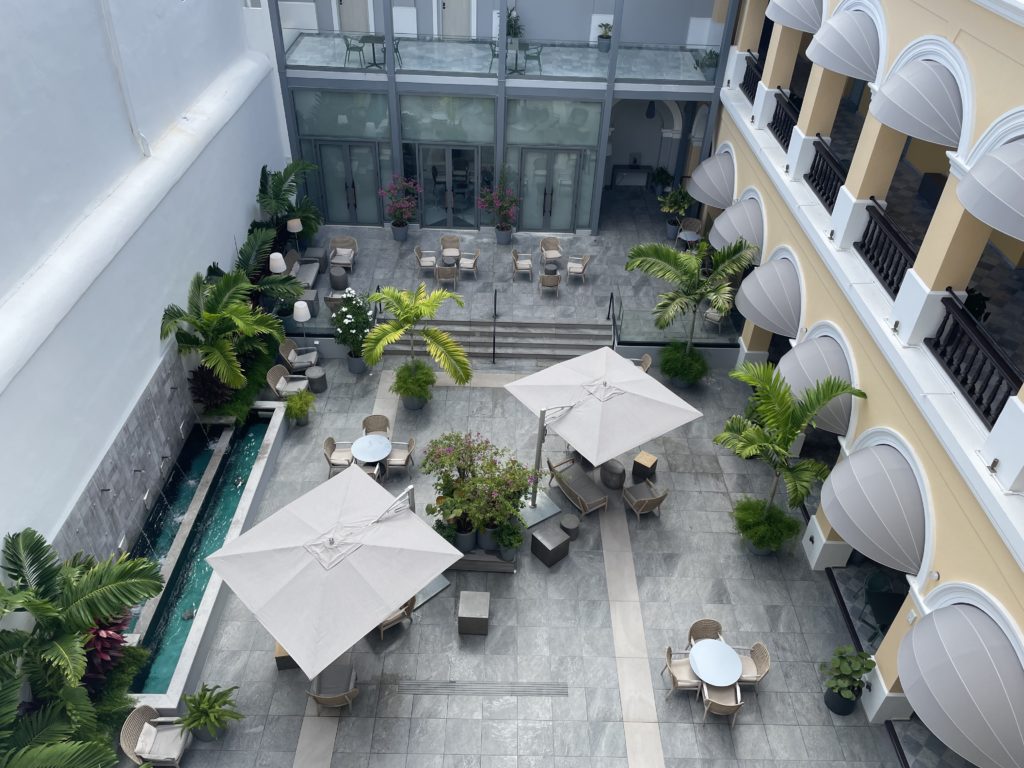
But, alas, those were just my first impressions during a second trip. This time, my second trip to Puerto Rico would be the second impression that meant the most. This time I’d be filming with a crew of locals, and I’d be staying in the heart of Old San Juan, at the beautifully recently restored “Palacio Provincial Hotel.”
I was told that this beautiful, historic, building in the heart of Old San Juan was originally built in the 1800s and that it was a former government building before being restored fairly recently.
It did not disappoint. I loved the hotel’s classic style and old-school atmosphere of Spanish style courtyards and high ceilings- while simultaneously basking in the modern, almost luxurious features like an infinity pool, hot tub, gym, uber-comfy bed, modern hot shower, super fast wifi, etc.
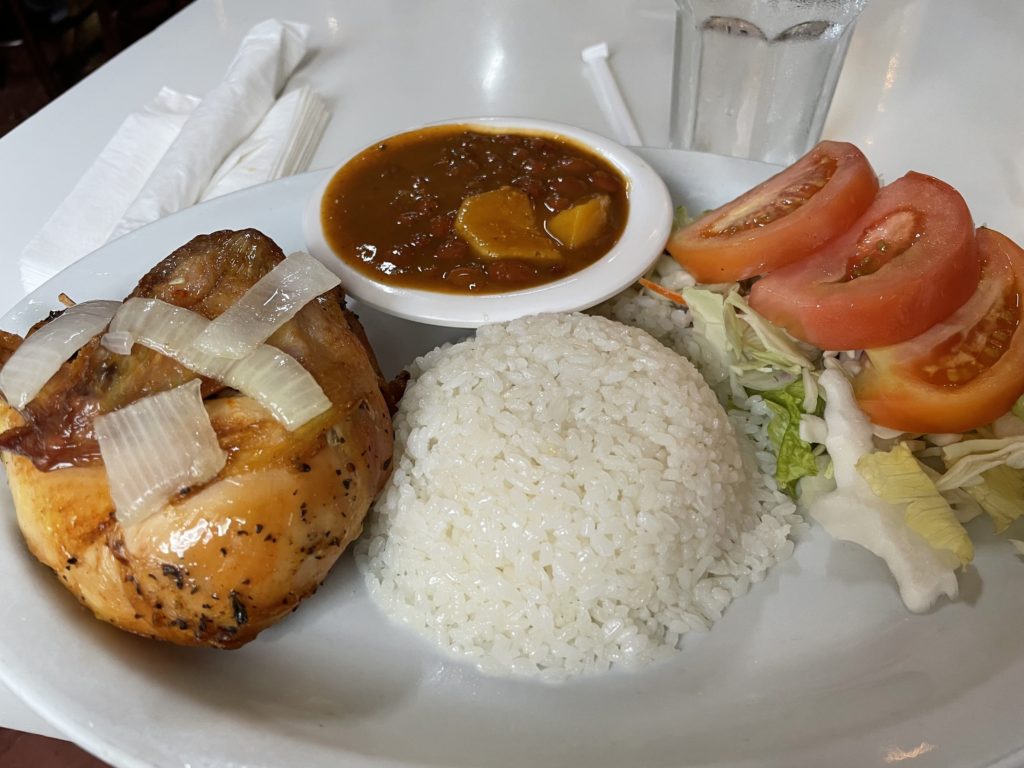
But my favorite thing about Palacio Provincial was location, location, location. I was within walking distance of so many sites, great bars, and restaurants. Indeed, this trip, I felt a part of Old San Juan.
Almost every morning, I’d head to the corner coffee and pastry kiosk at the park nearby and get a Cafe Negro (black coffee) con Mallorca sandwich pastry. Or I’d hit up the Restaurant El Jibarito nearby for an authentic, down-home Puerto Rican lunch.
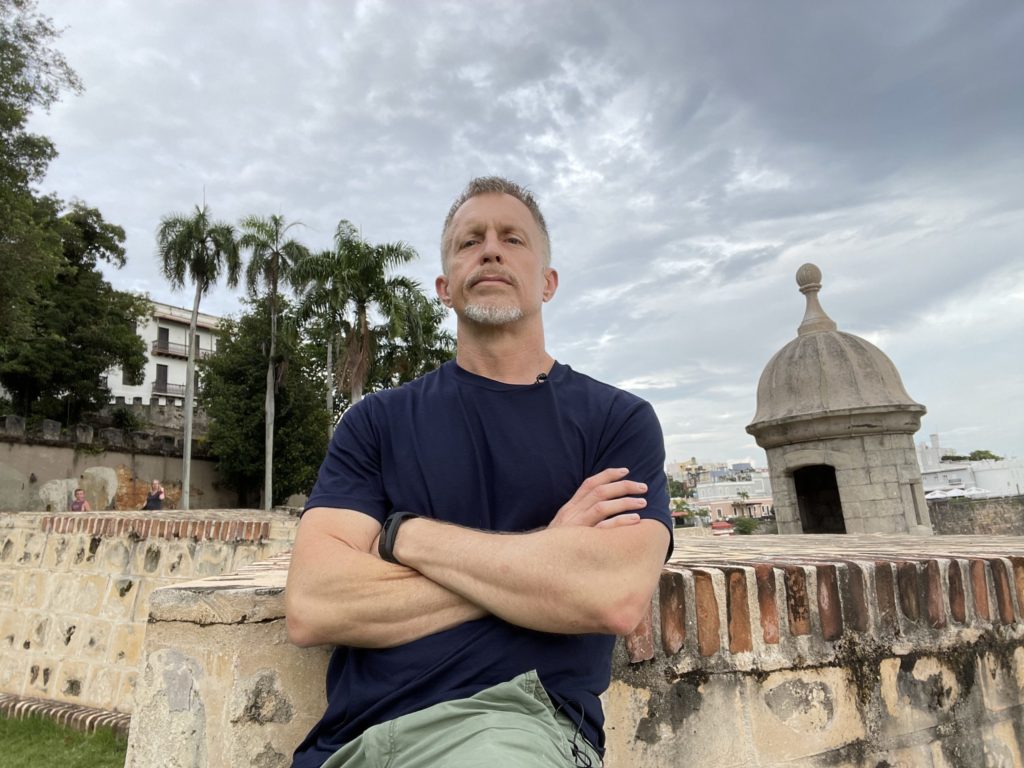
Or visit the Poets Passage on open mic night. Here I’d be treated to traditional poetry slam from poets as far away as Minnesota; or some Brazilian Batucada fused with Puerto Rican Plena and African drumming from a surprise musical act Baturepike who simply rocked the place.
Thanks to my local pals and film crew from Discover Puerto Rico, I’d eat very well (it was Rocio from the Spoon Experience who introduced me to my new favorite sandwich, the Mallorca) while venturing outside of Old San Juan frequently.
Our visit to the nearby beach community of Loiza was memorable for a few reasons. Mainly thanks to Rafi from the famous foodie Vlog and IG account La Mafia who showed me the ropes of eating Alcapurrías and Bacalaítos (two types of cuisine I’d never even heard of before).
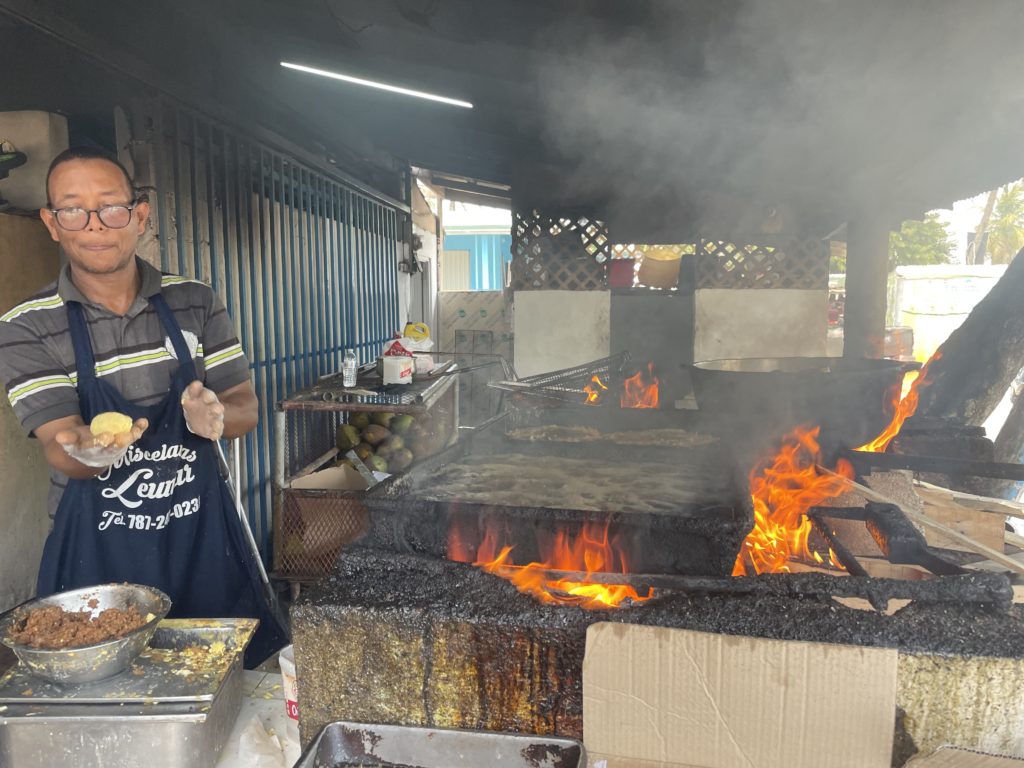
Rafi instinctively knew which local food kiosks were best and did the thinking for me. I’ve never interviewed anyone on the show with such an obvious knowledge and love of their local cuisine. We both did the eating, and I didn’t need to eat dinner that evening. I can’t speak for Rafi’s dinner that evening but given the performance he put in at lunch, I do recall wondering how the guy maintains any semblance of svelte appearance.
We also visited gorgeous Bahia Beach Resort to see the work the resort is doing to save Sea Turtles, Manatees, and various bird species on the island.
The “Alma De Bahia Foundation,” which translates to “the Soul of Bahia,” is their non-profit arm focusing on local sustainability through conservation initiatives and environmental education.
The Foundation works very closely with the residents and guests at Bahia to give back to our community and the natural environment. Our guide, Marcela, is an inspiring mixture of environmental warrior / marine biology nerd. She knows her stuff.
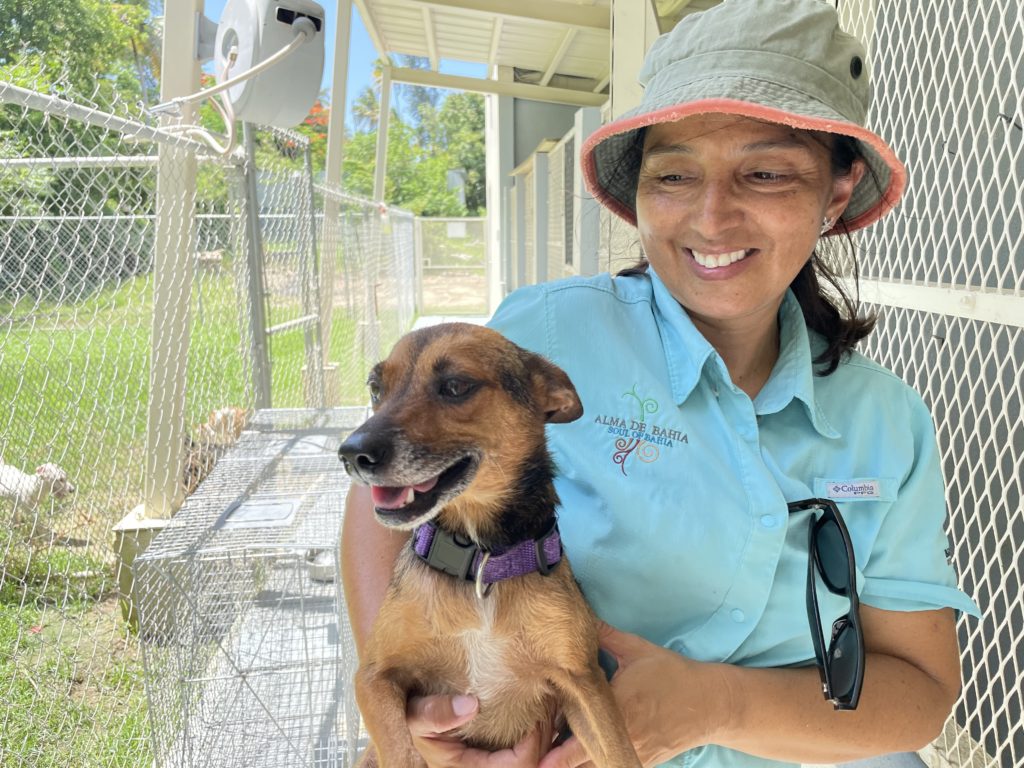
Marcela kindly offered us a bonus tour of the rescue shelter for dogs (watch the show to see how that ties into saving wildlife) and their farm, where they grow fruits and vegetables for the resort and surrounding community.
Speaking of farms, I must be getting old because I have this inexplicable desire to get back to my farm boy roots these days. Which I find ironic considering my city boy ways (yes, I know, I’m far from a “boy” anymore, but you get the point).
Anyhow, one of my favorite day trips outside of OSJ was a visit to the town of Maniti to tour Frutos Del Guacabo . There I finally milked a goat successfully, putting the “great Romanian goat milking scandal” from Season 2 in the rear view mirror. I hope!
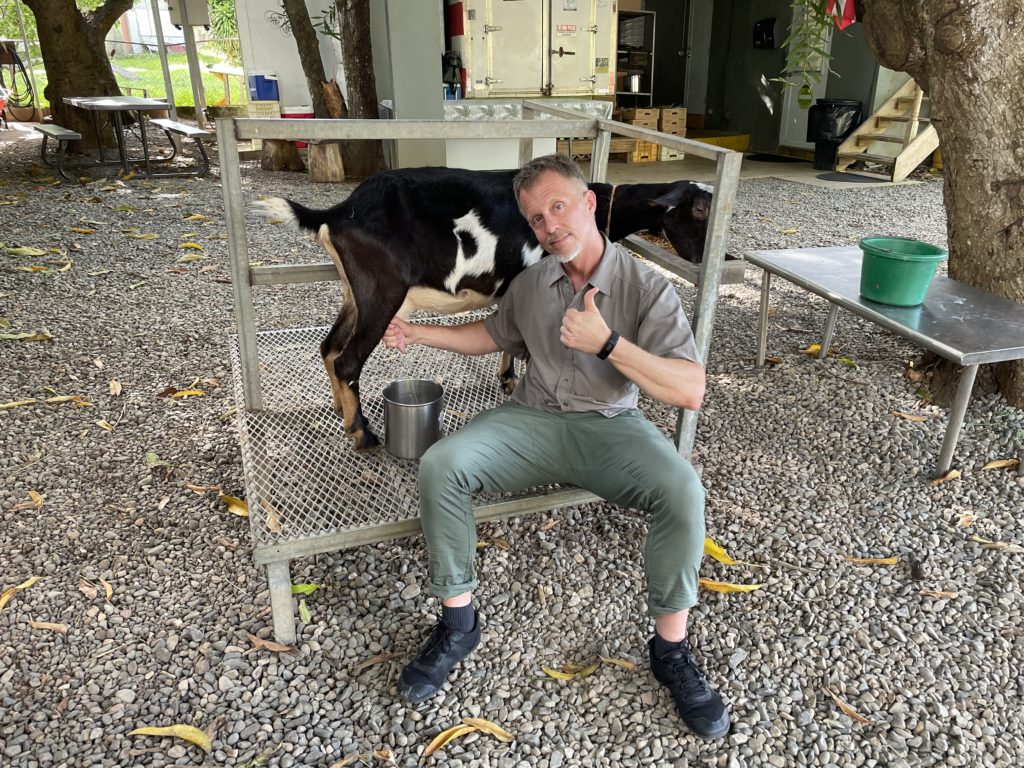
I also learned a new term, culinary agriculture, which is a fancy way of saying that you’ll get to taste some delicious results of their cutting-edge hydroponic and natural farming methods.
Efran showed us how it’s grown. Chef Adrian showed us how it’s cooked. And , you guessed it, I showed them how it’s eaten.
Other day trips were on our agenda, like our trip out to El Hippie Waterfall in Naguabo. Unfortunately, it had rained earlier and created a situation where I wouldn’t be able to get into the raging water. But it made an alternative beauty that showcased just a taste of the tremendous power of nature (though most Puerto Ricans likely don’t need reminding).
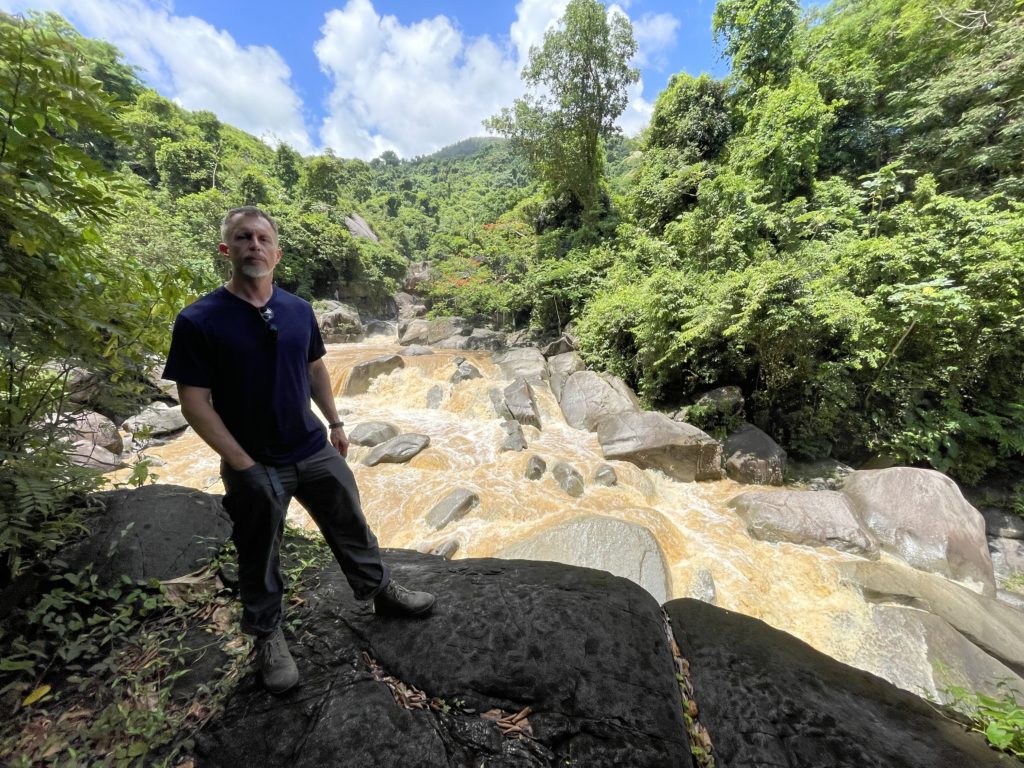
We ended the “official” shoot with a trip to Fajardo. After I finally got my mofongo fix at a late lunch, we night-kayaked to the Nestor Martinez Luminescent Bio Bay, one of three in Puerto Rico and five in the whole world (all in the Caribbean). Because of the temperature of the water, light pollution, and overall climate change, the luminescent critters took some work to see. But my favorite thing about the whole experience was the relaxing kayak trip back (going with the current on the way back) and hearing the sounds of the water and coqui frogs singing. I could have stayed out there all night, if they’d let me.
But alas, I had to fly back the next day and get to work editing, writing scripts, backing up, and in general, getting ready for Season Nine. We were far ahead pre-covid but now are behind. But I’m so happy to be traveling again, and I’m so grateful for this opportunity to get a second opportunity to visit Puerto Rico.
Speaking of covid, I was very comfortable filming there. Most people I knew or worked with closely indicated they were vaccinated and the retail establishments, generally speaking, enforced mask policy. I was tracking the numbers, they were lower than where I live in NYC and far lower than parts of the unvaccinated USA. Puerto Ricans seem to understand tragedy, and more importantly, the resilience required to overcome tragedy. They did not seem eager to court more tragedy and seemed to understand the balance of living their lives, making a living, while doing everything possible to keep everyone, visitors and locals alike, as safe as possible. It worked for me.
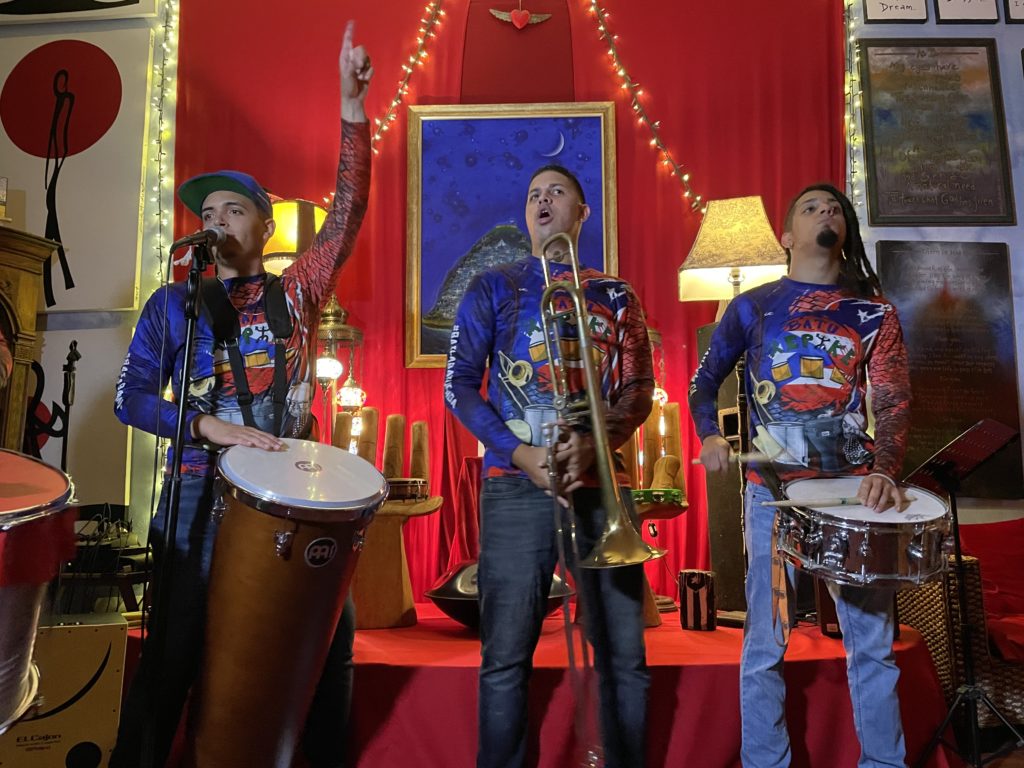
Yes, I was only in Puerto Rico for five days, but thanks to so many, this second trip was far more memorable than the first. So when I say it feels like the first time, this is what I mean. Besides, if I forget any details, this time, for better or worse, we have it on video… well, most of it! And besides, it gives me a good reason to return.
See more photos of our adventure HERE.
Look for the first one of two episodes of Raw Travel’s trip to Puerto Rico to premiere in November 2021. Stay tuned to facebook, twitter, and RawTravel.tv/Episodes .

